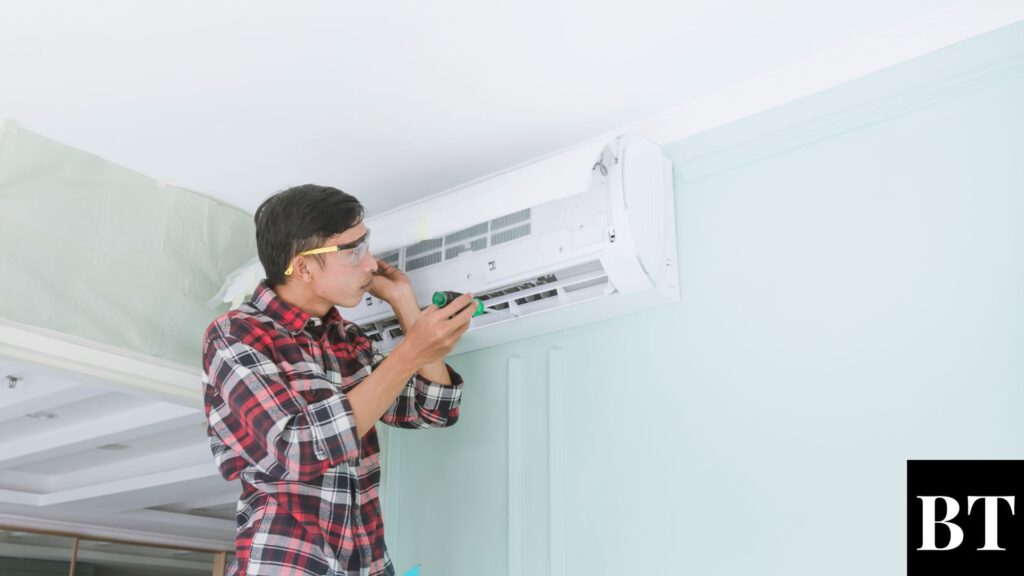As temperatures soar and people increasingly prioritize comfort, the demand for air conditioners has witnessed a significant surge. Among the myriad of options available, the split type air conditioner stands out as a popular choice for many homeowners and businesses alike. This type of AC system is distinctively different from its counterparts like the window or portable units. But what exactly is a split type air conditioner, and more importantly, when is it the optimal choice for cooling (or heating) your space? This article delves into the intricacies of the split type AC, offering insights on when it might be the perfect fit for your needs.
Understanding the Split Type Air Conditioner
A split air conditioner consists of two main components: the indoor unit and the outdoor unit. The indoor unit, often sleek in design, is mounted on the interior wall and responsible for dispersing the cooled air into the room. Meanwhile, the outdoor unit contains the compressor and the condenser, which expel heat out of the building. These two units are connected by a series of electrical wires and tubing, eliminating the need for a window space or large hole in the wall, which are often requirements for other air conditioning systems. This separation of components offers flexibility in installation and opens up a realm of benefits, which we will explore in the subsequent sections.

Key Advantages of Split Air Conditioners
- Aesthetic Appeal Split air conditioners are known for their sleek and modern design. Unlike bulky window units, the indoor component of a split system is slim and can be strategically placed to blend seamlessly with room décor. This ensures that it doesn’t obstruct views or become an eyesore, preserving the room’s aesthetic integrity.
- Flexibility in Installation One of the hallmarks of split air conditioners is the flexibility they offer in terms of installation. Since there’s no need for a window or large hole in the wall, homeowners have the freedom to install the indoor unit almost anywhere on the wall. This is particularly beneficial for rooms without windows or those with unconventional layouts.
- Quiet Operation Since the noisier components like the compressor and fan motor are located outside, split systems are notably quieter than their window or portable counterparts. This ensures a peaceful environment, making them an excellent choice for bedrooms, study rooms, and any space where noise can be a disturbance.
- Energy Efficiency Split air conditioners generally tend to be more energy-efficient. With features like inverter technology and the ability to cool or heat specific zones, users often find a noticeable reduction in their electricity bills. Moreover, the absence of ductwork means there’s minimal loss of energy, which is commonly seen in ducted systems.
- Multi-room Solutions Many split air conditioners offer multi-zone solutions, allowing homeowners to connect multiple indoor units to a single outdoor unit. This ensures that different rooms can be cooled or heated independently, offering personalized comfort and more efficient energy use.

Understanding the Limitations of Split Systems
- Initial Investment While split air conditioners offer several benefits, one of their primary drawbacks is the upfront cost. The initial investment for a split system, especially those with advanced features or multi-zone capabilities, can be considerably higher than window or portable units. This cost can be a deterrent for some homeowners, especially if they’re only looking for a temporary solution.
- Installation Complexity Although split systems provide flexibility in installation, the process itself can be more complex than other types of air conditioners. It often requires professional installation, which means drilling holes in the walls to connect the indoor and outdoor units. This might not be ideal for renters or those not keen on making structural changes to their homes.
- Maintenance Requirements Like all air conditioners, split systems require regular maintenance to function efficiently. However, since they have both indoor and outdoor components, there might be slightly more maintenance involved compared to single-unit systems. Filters need regular cleaning or replacement, and the outdoor unit requires periodic checks to ensure it’s free from obstructions and functioning correctly.
- Single Zone vs. Multi-Zone Cost While multi-zone split systems provide the advantage of cooling or heating multiple rooms, they also come with a heftier price tag. Not only are the units themselves more expensive, but installation can also be more complex and costlier due to the additional piping and electrical work required.
- Potential Aesthetic Concerns While the indoor units are sleek and blend well with most interiors, some individuals might not appreciate the appearance of the outdoor unit. In some cases, homeowners or housing associations may have regulations or preferences about where these can be placed, potentially affecting the aesthetics of a home’s exterior.

When to Opt for a Split Air Conditioner System
- Larger Homes or Open Spaces One of the primary reasons to choose a split system is the capability to efficiently cool larger homes or open spaces. Unlike window units that might struggle to distribute air across vast areas, split systems, especially those with multiple indoor units, can adequately serve larger areas without overexerting.
- Desire for Quiet Operation If a peaceful home environment is a priority, split systems are an excellent choice. The noise-producing components are housed outside, meaning the indoor operation is much quieter compared to window or portable units.
- Need for Customization and Control For those who prefer a tailored cooling or heating experience, split systems offer advanced controls and features. With the ability to set different temperatures for different rooms, homeowners can ensure everyone’s comfort preferences are met.
- Long-Term Cooling Solution While the initial investment is significant, homeowners looking for a long-term solution might find split systems more cost-effective in the long run. Their energy efficiency and longevity can lead to reduced electricity bills and replacement costs over time.
- Aesthetic Concerns Inside the Home For those who value the interior aesthetics of their homes and don’t want a bulky unit taking up window space, the sleek designs of indoor units of split systems can seamlessly integrate with most decor styles.
- When Professional Installation is Feasible Given the complexity of installing split systems, they are ideal for homeowners who are ready for a professional installation process. This might involve some structural modifications, but the result is a more permanent, efficient, and discreet cooling solution.

Potential Downsides and Considerations
- Initial Cost Implications One of the primary deterrents for many considering a split system is the initial cost. Installation can be more expensive than other AC types due to the need for professional setup and potential structural changes.
- Maintenance Needs Although split systems are designed for longevity, they do require regular maintenance. Neglecting this can reduce the system’s efficiency and lifespan. It’s essential to clean or replace filters and schedule professional check-ups to ensure the system runs optimally.
- Installation Limitations While split systems offer flexibility in terms of placement, there are still some limitations. The distance between the indoor and outdoor units can’t be too great, and walls or other obstructions can present challenges. Additionally, homes with thick walls or unique architectural features might need more extensive modifications.
- Not Easily Relocated Once installed, it’s not straightforward to relocate a split air conditioner. If homeowners are considering moving in the near future or want flexibility in changing the system’s location, a portable unit might be a better option.
- Overcapacity Issues It’s crucial to select a split system of the right capacity. An oversized system can lead to frequent on-and-off cycling, reducing efficiency and increasing wear on the unit. Conversely, an undersized system will struggle to cool the space adequately.
- Need for a Reliable Power Source Split systems require a stable power source to operate efficiently. Any inconsistencies in power supply can impact the system’s performance and might even damage its components.

Conclusion: Making an Informed Decision
Opting for a split air conditioner brings forth a combination of efficiency, design flexibility, and enhanced comfort. While they present clear advantages, especially for homeowners seeking discrete cooling solutions without extensive ductwork, it’s paramount to weigh these benefits against the system’s initial costs and maintenance demands. The right choice will ultimately hinge on individual needs, budget, and spatial constraints. With proper research and professional guidance, a split AC system can prove to be a valuable long-term investment in comfort and convenience.
Read more:




